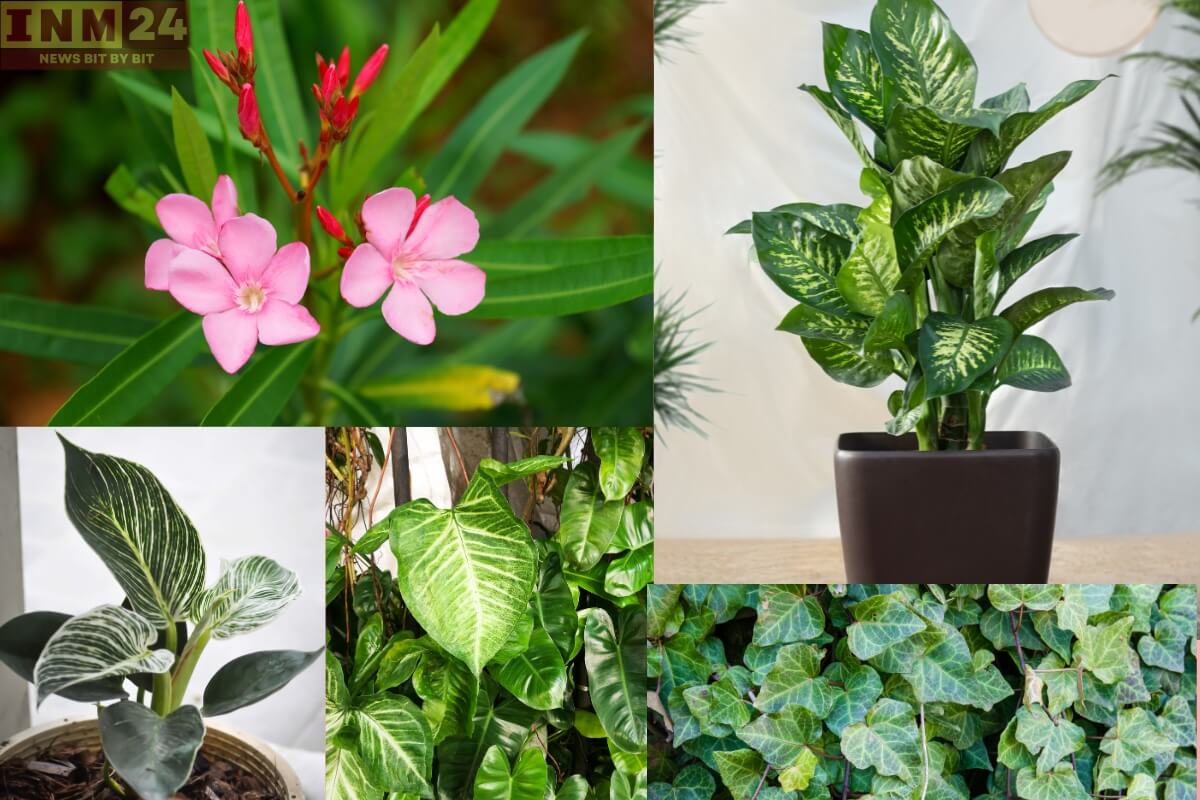While indoor plants can add beauty and freshness to your living space, it’s essential to be aware that some plants can pose risks to your health and safety. Certain plants contain toxins that can be harmful if ingested or even touched. To help you create a safe environment in your home, here are six hazardous plants that you should avoid keeping indoors:
Dieffenbachia (Dumb Cane)
Dieffenbachia is a popular ornamental plant known for its lush foliage and vibrant colors. However, all parts of the plant contain calcium oxalate crystals, which can cause severe irritation and swelling of the mouth and throat if ingested. Keep Dieffenbachia out of reach of children and pets to prevent accidental ingestion.
Oleander
Oleander is a beautiful flowering shrub commonly found in gardens and indoor landscapes. However, all parts of the oleander plant contain cardiac glycosides, which can cause symptoms such as vomiting, dizziness, and heart irregularities if ingested. Exercise caution and avoid bringing oleander plants into your home.
Sago Palm
The sago palm is a popular houseplant known for its exotic appearance and ease of care. However, all parts of the sago palm, especially the seeds, contain cycasin, a toxic compound that can cause severe gastrointestinal symptoms and liver damage if ingested. Keep sago palms away from children and pets.
Philodendron
Philodendrons are popular indoor plants prized for their lush foliage and air-purifying qualities. However, certain species of philodendron, such as the heartleaf philodendron, contain calcium oxalate crystals, which can cause irritation and swelling of the mouth and throat if ingested. Exercise caution when handling philodendron plants and keep them out of reach of children and pets.
Pothos (Devil’s Ivy)
Pothos is a versatile and low-maintenance houseplant that is often prized for its trailing vines and heart-shaped leaves. However, like philodendrons, pothos plants contain calcium oxalate crystals, which can cause irritation and swelling of the mouth and throat if ingested. Keep pothos plants out of reach of children and pets.
English Ivy
English ivy is a popular climbing vine often used as a decorative plant in indoor and outdoor settings. While it can add a touch of greenery to your home, English ivy contains compounds known as saponins, which can cause gastrointestinal upset if ingested. Additionally, handling English ivy can cause skin irritation in some individuals. Exercise caution when handling English ivy and keep it away from children and pets.
While indoor plants can enhance the aesthetic appeal of your home and provide numerous benefits, it’s essential to choose plants wisely and be aware of potential hazards. By avoiding hazardous plants like dieffenbachia, oleander, sago palm, philodendron, pothos, and English ivy, you can create a safer environment for yourself, your family, and your pets. When selecting indoor plants, always research their toxicity levels and ensure they are safe for your household. Safety should always come first when it comes to indoor gardening.
